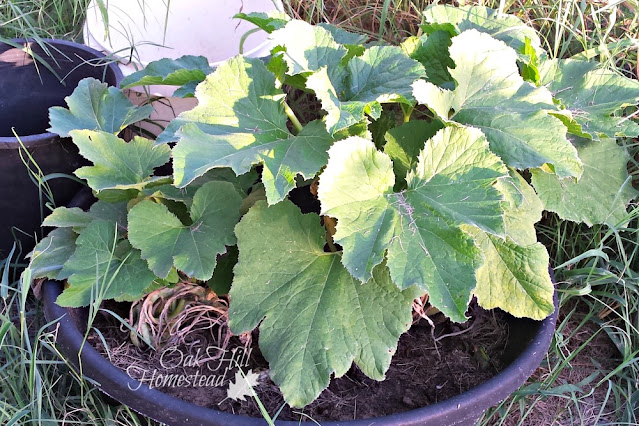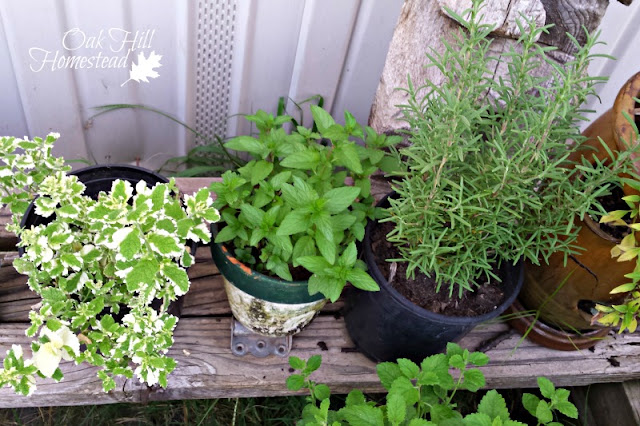Do you long for a garden but don't have the space for one? You can still have a vegetable garden in a small backyard. Start planning now, gather your pots and containers, and get growing this spring!
Updated January 2024
Vegetable gardening in a small space
Is your yard small, or do you live in an apartment and only have a patio or balcony? Perhaps you are waiting and hoping to move to a home with more land.
Those are not excuses to not have a garden, my friend. You can turn your small backyard into a thriving garden, as long as you know what to plant.
Location is important
Whether you're growing on a balcony, a deck or concrete patio, or in the ground in a corner of your small yard, location is the most important consideration of all.
Most vegetable plants crave a lot of sunshine, so choose the sunniest location you have available.
On the other hand, some vegetables don't like full sun or the extreme heat of direct summer sun. Read the seed packets and do some research to discover your plants' favorite growing conditions.
For instance, lettuce and other spring vegetables prefer cooler weather, and will grow quite well in bright locations that aren't necessarily in full sun. Afternoon shade will make these plants happy if you live in a hot climate.
Best vegetables to grow in a small space
So let's say that you have a small patio or balcony off your apartment or condo. You'll need to use containers in this situation, but there are many vegetables that grow well in containers.
The size and shape of your containers will depend on the plants you want to grow.
Root crops such as beets, carrots, radishes, onions and garlic do well in wide pots that are at least twelve inches deep. The plant above the ground isn't large, but you'll need to space the plants according to what's going on underground (how large or how long the root crop is!).
Young beets are more tender than large, more mature beets, so you can squeeze in a few more plants by planting a little more closely than recommended, and harvesting a little earlier.
There are several varieties of short carrots, and radishes are small just because they're radishes.
Strawberries can be grown in gutters from the home improvement store. You could use one row of guttering all around your space, installed above your containers, or use several short rows of gutters one above the other along a section of balcony railing or fence.
Medium-sized fruiting plants such as peppers, eggplant, beans and peas require larger containers, but the plants themselves aren't over-sized. You might need to stake these plants when they are larger.
Bush beans are a better choice to grow in containers than pole beans that will sprawl all over your limited space.
There are several varieties of small tomato plants that will do well in a small garden or containers.
You probably won't be able to grow a dinner plate-sized beefsteak, but salad tomatoes are a definite possibility. You'll need to stake these plants or use tomato cages.
Determinate tomato varieties are smaller plants that will grow to a certain size, produce fruit and call it a season.
Indeterminate varieties - which will continue to grow all season long into a huge plant until frost kills it in the fall - take up more space, but you can grow them in containers if you wish, and simply keep the ends pruned so the plant won't grow too large.
(For explanations of garden terminology, you can check out my Common Garden Terms for Beginners post here.)
You can also grow small melons and cucumbers. These will need a trellis of some sort, which you might be able to lean up against a fence, wall or balcony railing.
Zucchini can be grown in a wide container. The plants can be large but they don't spread very much.
These vegetables need some extra thought and planning
There are a few vegetables that need special planning. They aren't impossible to grow in a small space or in containers, but may require more space or other special conditions.
- Corn is wind-pollinated, and should be planted in a group or a block (not in a row). Because corn requires quite a few plants for successful pollination - and because the yield is small, at only one or two ears per stalk - it may not be a good use of limited space.
- Okra is a very large plant, growing up to six feet tall. Be sure your mature okra plant won't prevent sunlight from reaching smaller plants.
- Large squash plants such as butternut, spaghetti squash, pumpkin and others with a very long vine can reach 10-12 feet in length. They should be grown on a large, sturdy trellis if you have a small garden.
- Watermelon plants are space hogs, growing up to 12 feet long. They can be grown on a sturdy trellis, but their large fruits need to be supported with a sling or something similar.
More container ideas
Kitty litter buckets make great plant containers; ask your cat-owning friends to save their empties for you.
Check out farm stores such as Tractor Supply and farm-and-fleet type stores for large black rubber feed bowls or small water troughs to use as containers.
Five-gallon buckets are a staple for container gardens.
Planter boxes that attach to a balcony railing are an attractive place to grow small plants. Lettuce and radishes would grow well in these.
Cut the top third off of milk jugs and use them to grow small vegetable plants and herbs.
Be sure to drill holes in the bottom of all containers for drainage; most plants don't like having wet roots.
Growing in the ground
If you have a sunny corner in your yard that you can devote to vegetables, growing vertically is the best way to maximize your harvest in small spaces.
Choose plants that grow vertically such as pole beans, cucumbers and vining squash. Use trellises to train the plants to grow upwards.
You can plant smaller plants underneath the trellises and increase your harvest for this small space.
Try placing your plants a little closer together than recommended, and when one crop is finished, plant something else in that spot.

Maximizing your small space
Some plants are multi-purpose and are a good solution for a small garden space.
As well as eating beets when they are young and tender, you can eat the beet greens in salads or blend them in smoothies.
The greens from young onions can be snipped like chives, or you can eat the young onions as green onions.
Choose a packet of mixed gourmet loose leaf lettuce varieties for delicious salads with plenty of variety in shape, texture and color.
Cut your lettuce and spinach leaves as you need them, leaving the rest of the plant to continue growing. Learn more about growing a healthy salad garden in this post.
Placing small plant pots or containers on shelves will maximize the space on your balcony or patio. A 3-shelf unit will triple your growing space. Be aware that shelves can sometimes limit the amount of light your plants might receive.
Growing herbs
Herbs are another great candidate for container-growing. Chances are you can grow your favorite herbs on your patio or even indoors on a windowsill.
Many herb plants are smaller in size, and you can trim them back (and use the trimmings in your cooking) to keep their size under control.
Many herb plants have beautiful flowers and lovely fragrances too, which is a bonus.
Maintaining your small garden
Inspect your plants for insects and pests regularly. Because they are grown more closely together, insects are more likely to move from plant to plant and can be harder to spot.
Ventilation is important to keep your plants healthy. Balcony gardens might benefit from a fan's breeze on low speed.
Plants grown in containers need to be watered more often than those growing in the ground. Check your small garden regularly and water when needed.
Be considerate when you water your container garden. Water dripping from an overhead balcony might not make you a favorite neighbor.
Do you want more help planning your garden?
Check out my workbook Plan a Successful Garden! This ebook includes worksheets to help you discover:
- The best location for your garden
- The type of garden you want to grow - in the ground, raised beds or containers
- What to grow (that's the fun part!) depending on where you live
- And much more!
Enjoy the produce from your small garden and the "fruits" of your labor.
Related Posts:
Start a Vegetable Garden from Scratch Using Cardboard Boxes
For more gardening and simple living ideas and inspiration, subscribe to The Acorn, Oak Hill Homestead's weekly-ish newsletter, and join me on Facebook, Instagram and Pinterest. I'd love to see you there!
~~~~~
My hope is to inspire you, and to encourage your homesteading plans and your dreams of a simple, self-reliant, God-dependent life. You can follow me at:
Facebook | Instagram | Pinterest | Subscribe


















